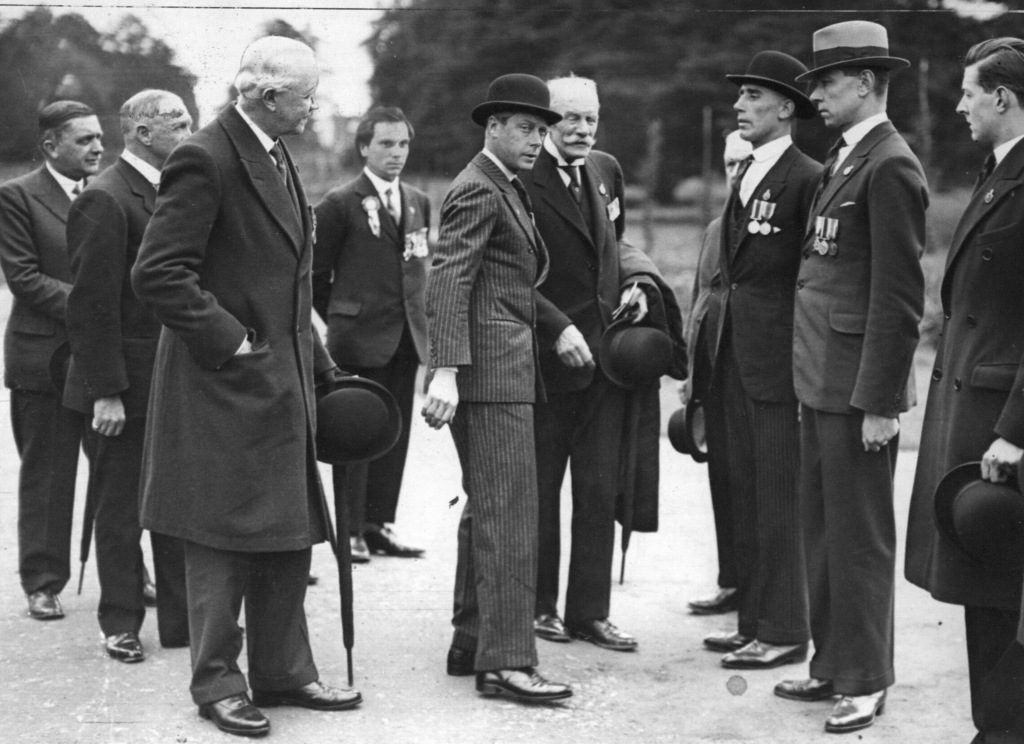
Edward VIII was king of the United Kingdom and the Dominions of the British Empire, and emperor of India, from 20 January 1936 until his abdication on 11 December of that year.
Edward was born during the reign of his great-grandmother Queen Victoria as the eldest child of the Duke and Duchess of York, later King George V and Queen Mary.
He was created Prince of Wales on his sixteenth birthday, nine weeks after his father succeeded as king. As a young man, Edward served in the British Army during the First World War and undertook several overseas tours on behalf of his father. While Prince of Wales, he engaged in a series of affairs that worried his father and the British Prime Minister, Stanley Baldwin.
Edward became king on his father’s death. However, he showed impatience with court protocol, and caused concern among politicians by his apparent disregard for established constitutional conventions. Only months into his reign, he caused a constitutional crisis by proposing to Wallis Simpson, an American who had divorced her first husband and was seeking a divorce from her second. The prime ministers of the United Kingdom and the Dominions opposed the marriage, arguing a divorced woman with two living ex-husbands was politically and socially unacceptable as a prospective queen consort. Additionally, such a marriage would have conflicted with Edward’s status as the titular head of the Church of England, which at the time disapproved of remarriage after divorce if a former spouse was still alive. Edward knew the Baldwin government would resign if the marriage went ahead, which could have forced a general election and would have ruined his status as a politically neutral constitutional monarch. When it became apparent he could not marry Wallis and remain on the throne, he abdicated. He was succeeded by his younger brother, George VI. With a reign of 326 days, Edward is one of the shortest-reigning monarchs in British history.
After his abdication, Edward was created Duke of Windsor. He married Wallis in France on 3 June 1937, after her second divorce became final. Later that year, the couple toured Germany. During the Second World War, Edward was at first stationed with the British Military Mission to France, but after private accusations that he was a Nazi sympathiser, he was appointed Governor of the Bahamas. After the war, Edward spent the rest of his life in retirement in France. He and Wallis remained married until his death.
Edward was officially invested as Prince of Wales in a special ceremony at Caernarfon Castle on 13 July 1911. The investiture took place in Wales, at the instigation of the Welsh politician David Lloyd George, Constable of the Castle and Chancellor of the Exchequer in the Liberal government. Lloyd George invented a rather fanciful ceremony in the style of a Welsh pageant, and coached Edward to speak a few words in Welsh.
When the First World War broke out in 1914, Edward had reached the minimum age for active service and was keen to participate. He had joined the Grenadier Guards in June 1914, and although Edward was willing to serve on the front lines, Secretary of State for War Lord Kitchener refused to allow it, citing the immense harm that would occur if the heir to the throne were captured by the enemy. Despite this, Edward witnessed trench warfare first-hand and visited the front line as often as he could, for which he was awarded the Military Cross in 1916. His role in the war, although limited, made him popular among veterans of the conflict. He undertook his first military flight in 1918, and later gained a pilot’s licence.
Throughout the 1920s, Edward, as the Prince of Wales, represented his father at home and abroad on many occasions. His rank, travels, good looks, and unmarried status gained him much public attention, and at the height of his popularity, he was the most photographed celebrity of his time. He took a particular interest in science and in 1926 was president of the British Association for the Advancement of Science when his alma mater, Oxford University, hosted the society’s annual general meeting.
He visited poverty-stricken areas of Britain, and undertook 16 tours to various parts of the Empire between 1919 and 1935. On a tour of Canada in 1919, he acquired the Bedingfield ranch, near Pekisko, Alberta, and in 1924, he donated the Prince of Wales Trophy to the National Hockey League. In 1929 Sir Alexander Leith, a leading Conservative in the north of England, persuaded him to make a three-day visit to the County Durham and Northumberland coalfields, where there was much unemployment. From January to April 1931, the Prince of Wales and his brother Prince George travelled 18,000 miles (29,000 km) on a tour of South America, steaming out on the ocean liner Oropesa, and returning via Paris and an Imperial Airways flight from Paris–Le Bourget Airport that landed specially in Windsor Great Park.
In 1919, he agreed to be President of the organising committee for the proposed British Empire Exhibition at Wembley Park, north-west London. He wished the Exhibition to include “a great national sports ground“, and so played a part in the creation of Wembley Stadium.